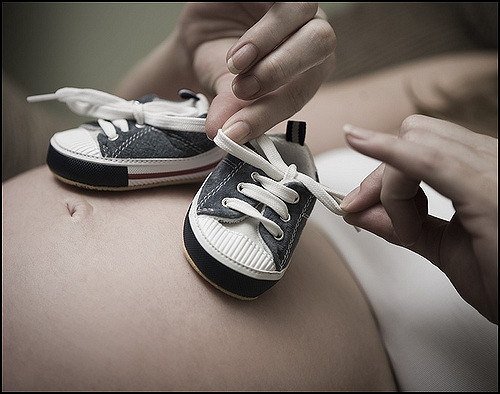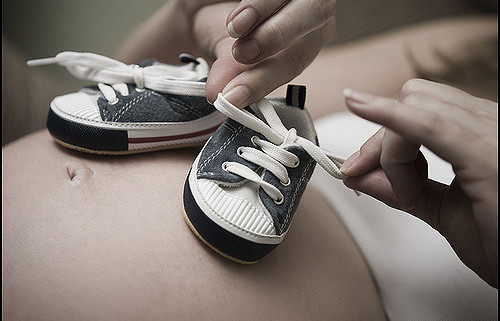Birth Plan Basics – A Roadmap For The Big Day

Contents
General Birth Plan Tips
Your birth plan serves 2 purposes: it gives you a chance to think about your preferences and it informs other people of those preferences. The plan is most useful if it’s short and clear – keep it to a page or 2 so that all the relevant information is easily accessible. You may want to dedicate the first page to an uncomplicated delivery and put provisions for a delivery with complications on the second page, just in case. As you work on the plan, keep in touch with your medical care providers to talk about your preferences and any concerns they may have.
Once you’ve created your birth plan, make sure everyone who needs it has a copy. That should include yourself, your OB-GYN, your doula or midwife, and your partner. You may want to give a copy to anyone else who you plan on having there when you deliver, as well.
Finally, remember that it’s ok to change your birth plan. You can start it as soon as you know you’re pregnant and revise it right up until the very end. Remember that quote about how “no battle plan survives contact with the enemy?” Birth plans can be kind of like that. You may get to the big day and decide that you want something different, and that’s just fine. You’re the one who has carried a baby for 40 weeks. You’re the one about to deliver it. You get to make the decisions.
What’s In Your Birth Plan?
So, what does your birth plan need to include? It should have the contact information of your OB-GYN, your hospital or birthing center of choice, and at least 1 emergency contact just in case. Other than that, it’s all about your preferences for delivery:
1. Where To Deliver
Not that long ago, there was no choice about where to have a baby – you did it at home, in your bed, with the local midwife. It’s the 21st century now, however, and you have choices. You can still choose to give birth at home, in bed, with a midwife or a doula. You can give birth in the hospital, in the maternity ward, with your OB-GYN. You can also give birth at home in the bath or in a birthing pool – it’s easier to clean up than your bed and some women find that it’s easier in the water. If home birth isn’t for you, you can give birth at a birthing center or hospital. A birthing center will have equipment, such as birthing balls and birthing pools, to facilitate your delivery. They’re often staffed by midwives and may consult with OB-GYNs or pediatricians. At a hospital, you’ll give birth in the maternity ward. Depending on where you live, you may have your choice of hospitals. Look online for reviews of their maternity wards and talk to other mothers about their experiences so you can choose the best hospital for you.
Think in advance about where you want to deliver and put it in your birth plan. However, note that you may have to go to a hospital if your delivery becomes complicated and requires a c-section or medical intervention for the baby. If you plan to deliver at home or in a birthing center, you’ll need to include a provision for emergency transportation to the hospital in your birth plan.
2. Whom Do You Want To Be There?
Back in the day, delivery was considered a ladies-only endeavor. Now, you can choose who you want to have in the room with you. Maybe it’s your partner, maybe it’s your best friend, maybe it’s your parents – you’re the one in labor and you get to decide. Note that some birthing centers and hospitals will have restrictions around the total head count allowed in the room, so you’ll want to look that up before you make your decision.
On your birth plan, put a list of the names and contact information of anyone you want to be there on the big day. That way all of the necessary information is in one place and it’s easy to go down the list and get in touch with everyone at once.
3. What Are Your Pain Management Preferences?
The most common type of pain medication during delivery is an epidural, a type of anesthetic that numbs your body from the waist down. It makes contractions less painful, but not everyone wants it. Think it over and talk to your doctor about whether an epidural is the right choice for you. If you do want an epidural, you may have to give birth in a hospital. Most birthing centers don’t have the facilities to perform that type of procedure and you can’t have it done at home. If you don’t want an epidural, you may consider massage, acupuncture, breathing exercises, or spending some time in a hot tub or jacuzzi. Be sure to check out the available facilities wherever you want to deliver so you can choose a facility that fits your pain management needs.
Put your pain management preference on your birth plan and make sure your doctor knows about it.
4. Mommy Care
Labor is tough, and you’ll want to do everything you can to make it comfortable. Whatever you’re going to want, be it a favorite pillow or a certain album or a stuffed animal or 2 boxes of Thin Mints (we’re not here to judge), put it on your birth plan. It doesn’t hurt to include your general delivery-day packing list on the plan, if you have room, so you don’t have to worry about forgetting anything important. Do you have an outfit you want to wear home the next day? Put it in the plan. Do you have a particular outfit you want the baby to wear home? Put that in the plan, too.
5. Complications
The vast majority of deliveries go smoothly, but not all of them. If your labor gets complicated, what are your preferences? To work on this section of the plan, you may want to sit down with your OB-GYN to ask about the potential risks and talk about your options if, for example, the baby is in the wrong position or gets stressed. You can decide on your preferences for pain management, delivery-assistance tools, and cesarean sections if necessary.
Even in uncomplicated deliveries, your medical care provider may want to perform an episiotomy. You’ll need to decide whether you’re ok with it and, if not, what measures your care provider should take to avoid having to do it.
The Best Laid Birth Plans
We said it above and we’ll say it again – your birth plan can change. However, it’s important to think about all of these questions in advance and have answers ready to go on the big day. You don’t want to get to your birthing center only to find out they don’t even have a jacuzzi!
What did you include in your birth plan? Let us know in the comments!
Image Credit and License








Leave a Reply
Want to join the discussion?Feel free to contribute!